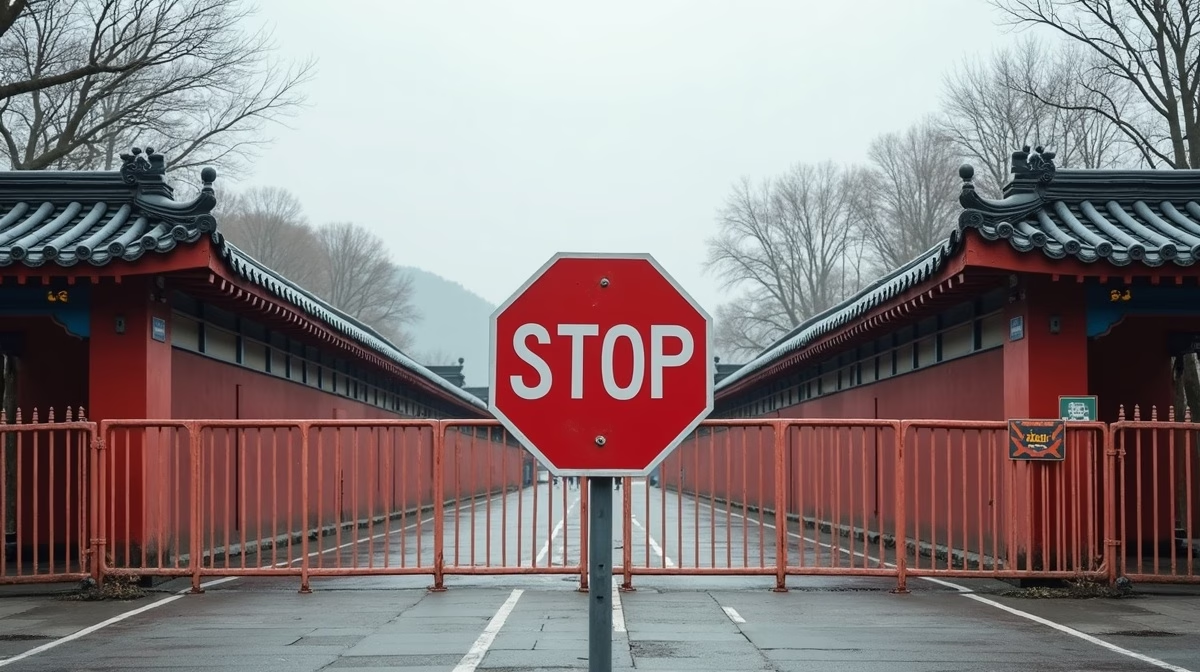In a move that feels less like a trade dispute and more like a declaration of technological independence, China has reportedly slammed the door on Nvidia’s specially designed AI chips. Beijing’s internet regulator has ordered the country’s tech titans, including Alibaba and ByteDance, to stop buying and testing Nvidia’s RTX Pro 6000D, a processor explicitly hobbled to comply with US export restrictions. This isn’t just another salvo in the U.S.-China tech war; it’s China announcing its own “forced graduation,” deciding that its homegrown hardware is finally good enough to go it alone.
Key Takeaways
- Ban from Beijing: China’s Cyberspace Administration (CAC) has directed major Chinese tech companies to halt all testing and cancel existing orders for Nvidia’s RTX Pro 6000D chip, a product designed specifically for the Chinese market.
- A Chip Nobody Wanted: The ban follows a lukewarm reception for the RTX Pro 6000D. Chinese firms reportedly found the chip to be overpriced and underpowered, especially when compared to more powerful, banned Nvidia chips which remain available on the gray market for less.
- Declaration of “Good Enough”: Chinese regulators have reportedly concluded that domestic AI processors from companies like Huawei and Cambricon have achieved performance “comparable to or exceeding” the nerfed Nvidia chips permitted under US export controls.
- A Strategic Miscalculation: The U.S. strategy of allowing only weakened chips into China inadvertently created a clear, achievable performance target for China’s domestic industry. Now that Beijing believes it has hit that target, the West has lost its primary point of leverage.
- Nvidia Caught in the Middle: CEO Jensen Huang expressed disappointment but acknowledged the larger geopolitical forces at play. “We can only be in service of a market if the country wants us to be,” he said in London.
“No Thanks, We’ll Build Our Own”
The order from the Cyberspace Administration of China (CAC) was unambiguous. As first reported by the Financial Times, tech giants like Alibaba and TikTok-parent ByteDance, which had been testing and planning to order tens of thousands of Nvidia’s RTX Pro 6000D chips, were told to stop. Immediately.
This move goes far beyond previous government guidance that merely cautioned companies against buying another China-specific chip, the H20. This is a hard stop. The message, as one Chinese tech executive told the FT, is “now loud and clear… it’s all hands on deck to build the domestic system.”
It’s a bold proclamation, but it didn’t come out of nowhere. The RTX Pro 6000D, and its sibling the H20, were Nvidia’s attempt to thread a geopolitical needle: design a chip powerful enough to be useful for AI, but weak enough to not violate increasingly stringent U.S. export controls aimed at kneecapping China’s technological ascent. The problem? The compromise satisfied no one. Chinese buyers found the RTX Pro 6000D wasn’t cost-effective, lagging in performance behind top-tier chips that could still be acquired through underground channels.
From Dependence to Defiance
Nvidia has been walking a tightrope for years, caught between its massive Chinese market and the whims of Washington. The saga began when the Biden administration, and later the Trump administration, imposed and expanded export restrictions, fearing that China would use top-tier American chips to gain a military and economic edge.
The bans were a direct hit to Nvidia’s bottom line and forced the company to develop these downgraded chips just to stay in the game. But the policy created a paradoxical effect. While Washington was trying to choke off supply, a thriving gray market smuggled in top-tier chips anyway. At the same time, the restrictions served as a powerful catalyst for China’s own semiconductor industry. Spurred by a nationalist drive for self-reliance, companies like Huawei and Alibaba ramped up their own chip development.
Beijing has now surveyed the landscape and, after summoning its domestic chipmakers, has apparently reached a pivotal conclusion: our stuff is good enough. According to reports, regulators believe China’s AI processors have reached a level on par with, or even better than, the downgraded Nvidia products legally available to them.
Why It Matters
The US strategy was to put China in a technological corner, letting its engineers play only with safety-scissors versions of the West’s cutting-edge AI tools. That strategy has just spectacularly backfired.
By creating a “low-performance” tier of export-compliant chips, Washington didn’t just limit China—it gave Beijing a benchmark. The goal for China’s domestic chip industry was no longer the impossible dream of matching Nvidia’s state-of-the-art Blackwell GPUs overnight. Instead, the goal became much more tangible: just be better than the nerfed stuff America lets us buy. They were given a clear, achievable target for “good enough,” and now, they’re declaring they’ve hit it.
This is China’s “forced graduation.” The sanctions intended to hobble them have instead weaned them off their dependency. The country is making a high-stakes gamble, forcing its tech giants to use domestic hardware that might still be inferior in a ‘specs-for-specs’ comparison with Nvidia’s best. But by mandating its use, Beijing is accelerating the development of a completely independent technology ecosystem—from silicon to software—that no longer answers to Washington.
The West’s most potent leverage in the tech race has always been its control over the supply of premier AI hardware. With this move, China is wresting that lever away. You can’t threaten to withhold chips that the other side is already refusing to buy. The policy designed to keep China a step behind may have just taught it how to run on its own.
Conclusion
For years, the U.S. played a delicate game of trying to limit China’s technological growth without completely severing a lucrative market. The result was a half-measure: selling “good-but-not-great” chips. Today, China has called the bluff. By rejecting these compromise chips and redirecting its massive purchasing power inward, Beijing is betting its entire technological future on itself. America wanted to keep China in the sandbox, but instead, it may have just kick-started the construction of a rival playground next door. The shockwaves of this decision will define the global tech landscape for the next decade.
Sources
- Ars Technica: China blocks sale of Nvidia AI chips
- Reuters: China tells tech firms to stop buying Nvidia’s AI chips, FT reports
- Gizmodo: China Bans Nvidia’s AI Chips
- TS2.tech: Space Races, Chip Wars, Cyber Shocks: Global Tech Roundup (Sept. 15-16, 2025)
- Reuters: Nvidia’s new RTX6000D chip for China finds little favour with major firms, sources say
- Bloomberg: China Agency Orders Firms to Stop Buying Nvidia AI Chip, FT Says
- Gizmodo: China’s Souring on Nvidia. Here’s Why.







